Shopify | Shopify Plus | Shopify Store | Shopify Website | Shopify Dropshipping | Design Shopify Store | DropshippingFor More Visit www.rajimulislamjoy.com
Don't wanna be here? Send us removal request.
Text
Hostinger Web Hosting Positively Impacted Our Business Growth


In the early days, we were struggling with our previous web hosting provider. Our website was slow, and frequent downtimes were costing us both traffic and sales. Customers would often complain about the time it took to load pages, and we noticed that our bounce rates were alarmingly high. This not only affected our user experience but also hurt our SEO rankings.

As soon as we migrated our website to Hostinger, the difference was noticeable. Our website’s load speed improved significantly, which had an immediate impact on user experience. Customers no longer had to wait for pages to load, and we saw a decrease in bounce rates. This improvement in speed also helped our site rank better on search engines, bringing in more organic traffic.




As our business continued to grow, so did our hosting needs. Hostinger made it easy for us to scale up by offering flexible hosting plans. We upgraded our plan to accommodate more traffic and added new features to our site without any hassle. The seamless scalability of Hostinger’s services ensured that our website could keep up with our expanding business, allowing us to continue growing without any interruptions.

Looking back, we’re grateful that we chose Hostinger as our web hosting provider. It has positively impacted our business in ways we couldn’t have imagined, and we’re excited to continue growing with Hostinger by our side. If you’re looking for a web hosting provider that can truly support your business’s growth, we highly recommend giving Hostinger a try.
0 notes
Text
Email Verifier for Reoon Lifetime Deal completely changed my life.

I realized early on in my company effort that maintaining a clean email list was important. However, I frequently had problems with spam traps and bounced emails, and managing and confirming emails was a laborious effort. Next, I learned about the Reoon Email Verifier Lifetime Offer.

The real game-changer was the accuracy of the verification. My email deliverability improved significantly, and I noticed a boost in my engagement rates. No more worrying about bounce rates or spending extra on email campaigns that didn’t reach the right people.

In short, the Reoon Email Verifier Lifetime Deal was a fantastic investment. It made email management effortless and effective, giving me more time to focus on growing my business.
Don’t miss out! Get the Reoon Email Verifier Appsumo Lifetime (LTD) for just $79. I highly recommend checking this out. Grab the Deal Now!
0 notes
Text
SiteGuru Favourite Tool For SEO Experiments just $69
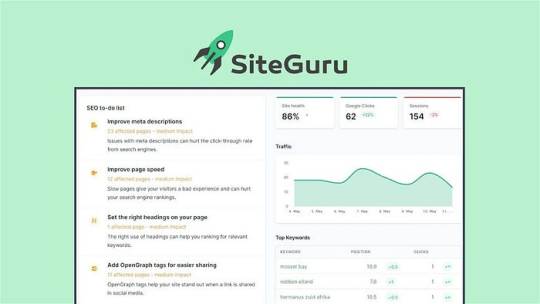
Why Choose SiteGuru for SEO?
Comprehensive Site Audits SiteGuru offers thorough website audits that pinpoint areas in need of development. The problems that can be impairing the functionality of your website are highlighted by SiteGuru, from broken links to slowly loading pages.
User-Friendly Interface The simple user interface of SiteGuru is one of its best qualities. To use the tool, you don’t have to be an expert in technology. Understanding the audit findings and taking the required action is made simple by its user-friendly design.
Actionable Insights Not only does SiteGuru identify issues, but it also provides useful information. By giving you precise, detailed instructions on how to resolve the problems, the tool makes it simpler for you to make adjustments and get results fast.
Regular Updates SEO is a dynamic field with search engines constantly updating their algorithms. SiteGuru stays ahead of the curve by regularly updating its features to align with the latest SEO trends and best practices.
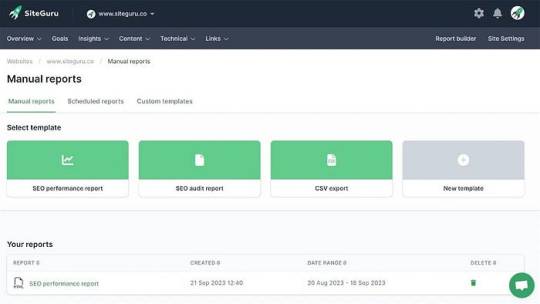
Key Features of SiteGuru
Site Audits: Perform in-depth audits to identify and fix SEO issues.
Keyword Tracking: Monitor your keyword rankings and track their performance over time.
Backlink Analysis: Analyze your backlink profile and identify opportunities for improvement.
Competitor Analysis: Compare your site’s performance with that of your competitors to find out where you stand.
Custom Reports: Generate custom SEO reports that provide a clear overview of your site’s health and performance.
How to Get Started with SiteGuru
Sign Up: Visit the SiteGuru website and sign up for an account. The process is quick and straightforward.
Add Your Website: Once you’re signed up, add your website to start the audit process. SiteGuru will crawl your site and generate a comprehensive report.
Review the Report: Go through the audit report to identify the issues affecting your site’s SEO.
Implement Recommendations: Follow the actionable insights provided by SiteGuru to fix the issues and optimize your site.
Monitor Progress: Regularly use SiteGuru to monitor your site’s performance and make continuous improvements.
By the help of SiteGuru, an excellent instrument, you may advance your SEO initiatives. Digital marketers and website owners love it for its extensive capabilities, easy-to-use interface, and reasonable price. You may obtain a tool that provides priceless insights and keeps you one step ahead of the competition in the cutthroat world of search engine optimization for just $69 dollars. The performance of your website will skyrocket if you use SiteGuru from now on.
So Let’s Start with SiteGuru
0 notes
Text
How to Set Up SMS Marketing on Shopify Step-by-Step Guide
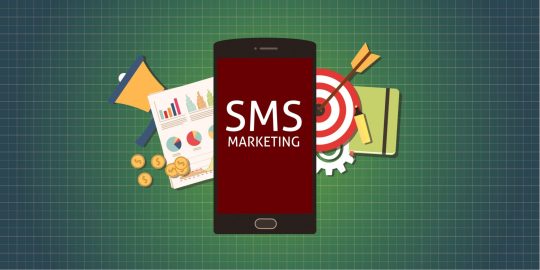
Why Use SMS Marketing for Shopify?
Before diving into the setup process, let’s understand why SMS marketing is a game-changer for your Shopify store:
High Open Rates: SMS messages have an open rate of 98%, significantly higher than emails.
Immediate Delivery: Messages are delivered instantly, making it perfect for time-sensitive promotions.
Direct Communication: Reach your customers directly on their mobile phones, ensuring your message is seen.

how to set up sms marketing on shopify
1. Choose an SMS Marketing App
The first step in how to set up SMS marketing on Shopify is to select an appropriate SMS marketing app. Shopify offers several apps that can help you manage your SMS campaigns effectively. Some popular choices include:
Klaviyo: Known for its robust features and integration capabilities.
SMSBump: Specifically designed for SMS marketing, offering automation and segmentation.
Postscript: A user-friendly app with powerful targeting and analytics.
Install the app of your choice from the Shopify App Store.
2. Install and Configure the App
Once you’ve selected an app, follow these steps:
Install the App: Click on the ‘Add app’ button in the Shopify App Store and follow the prompts to install.
Connect Your Store: After installation, you’ll need to connect the app to your Shopify store by following the app’s setup instructions.
Configure Settings: Set up your sender ID, which is the name or number that will appear on your recipients’ phones. Configure other settings like compliance and message templates as per your business requirements.
3. Build Your Subscriber List
To effectively use SMS marketing, you need a list of subscribers who have opted in to receive messages. Here’s how to build your list:
Add Sign-Up Forms: Use pop-ups, landing pages, and checkout opt-in options to collect phone numbers.
Promote Opt-In Offers: Encourage customers to subscribe by offering incentives like discounts or exclusive content.
Ensure Compliance: Make sure you comply with regulations like the TCPA (Telephone Consumer Protection Act) by obtaining explicit consent from your subscribers.
4. Create Your SMS Campaigns
Now that your app is set up and you have a subscriber list, it’s time to create your SMS campaigns:
Define Your Goals: Determine what you want to achieve with your campaign—be it driving sales, promoting new arrivals, or re-engaging inactive customers.
Craft Your Message: Keep it short, relevant, and action-oriented. Include a clear call-to-action (CTA) such as “Shop Now” or “Claim Your Discount.”
Schedule Your Messages: Choose the best times to send your messages. Avoid sending messages too early or late in the day.
5. Automate Your Campaigns
Automation is key to effective SMS marketing. Here’s how to automate your SMS campaigns on Shopify:
Set Up Triggers: Use triggers based on customer behavior, such as abandoned cart reminders, order confirmations, and shipping updates.
Segment Your Audience: Divide your subscribers into segments based on their purchase history, location, and engagement levels for more personalized messaging.
Test and Optimize: Continuously test different messages, send times, and strategies to see what works best. Use the app’s analytics to track performance and make data-driven decisions.
Best Practices for SMS Marketing on Shopify
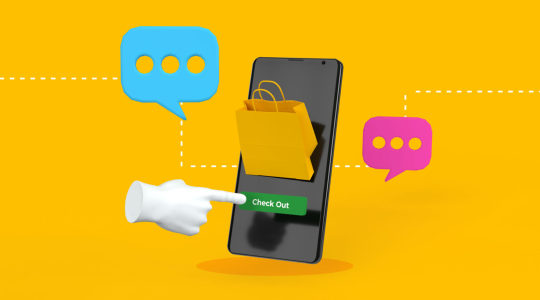
Personalize Messages: Use your subscribers’ names and tailor messages based on their preferences and past behaviors.
Be Compliant: Always provide an opt-out option in every message to comply with legal requirements.
Limit Frequency: Avoid bombarding your customers with too many messages. Stick to a reasonable frequency to keep your audience engaged without feeling overwhelmed.
Measure Results: Regularly review your campaign performance metrics, such as open rates, click-through rates, and conversion rates, to refine your strategy.
how to set up sms marketing on shopify is a powerful way to enhance customer engagement and drive sales. By following these steps, you can create effective SMS campaigns that reach your audience directly and yield impressive results. Remember, the key to successful SMS marketing is personalization, compliance, and continuous optimization.
For more tips and insights on optimizing your Shopify store, subscribe to our blog and stay ahead in the e-commerce game! need expert Contact us
0 notes
Text
10 Best Tips for Optimizing My Shopify Store
Running an online store on My Shopify can be both exciting and challenging. With the right strategies, you can maximize your store’s potential, enhance customer experience, and boost your sales. Here are ten essential tips to help you optimize your My Shopify store effectively
1. Choose the Right Theme
The theme of your My Shopify store sets the tone for your brand. Select a theme that is visually appealing, responsive, and aligns with your brand’s identity. Ensure it’s mobile-friendly, as a significant portion of traffic comes from mobile devices.
2. Optimize for SEO
Search engine optimization (SEO) is crucial for driving organic traffic to your store. Use relevant keywords in your product titles, descriptions, and meta tags. For instance, integrate “My Shopify” naturally within your content to improve your store’s visibility on search engines
3. High-Quality Product Images

Images play a vital role in online shopping. Use high-resolution photos that showcase your products from multiple angles. Ensure images are optimized for fast loading times to enhance user experience and SEO.
4. Write Compelling Product Descriptions

Your product descriptions should be detailed, informative, and engaging. Highlight the benefits and features of each product. Use bullet points for easy readability and include keywords like “My Shopify” to improve search rankings.
5. Simplify Navigation
A well-structured navigation menu helps customers find what they’re looking for quickly. Categorize products logically, use clear labels, and include a search bar. A seamless navigation experience can reduce bounce rates and increase conversions.
6. Implement Customer Reviews

Customer reviews can significantly influence purchasing decisions. Enable reviews on your product pages to build trust and provide social proof. Respond to reviews to show that you value customer feedback.
7. Use Email Marketing

Email marketing is a powerful tool for driving repeat sales. Collect email addresses through pop-ups or at checkout, and send regular newsletters, promotional offers, and updates. Personalize emails to make your customers feel valued.
8. Leverage Social Media

Promote your My Shopify store on social media platforms like Facebook, Instagram, and Twitter. Share engaging content, run ads, and interact with your audience. Social media can drive traffic to your store and increase brand awareness.
9. Optimize Checkout Process
A smooth and straightforward checkout process reduces cart abandonment rates. Offer multiple payment options, enable guest checkout, and keep the process as short as possible. Ensure your checkout page is secure and trustworthy.
10. Analyze and Improve
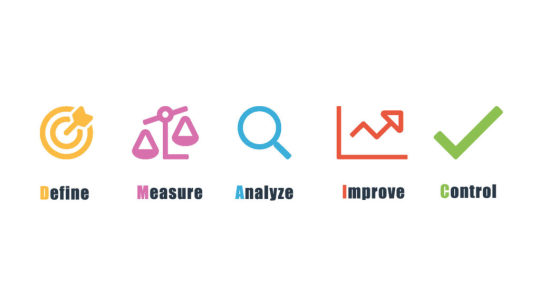
Regularly analyze your store’s performance using tools like Google Analytics and Shopify’s built-in analytics. Monitor key metrics such as traffic, conversion rates, and average order value. Use this data to make informed decisions and continuously improve your store.
Bonus Tip: Utilize Shopify Apps
The Shopify App Store offers a wide range of apps to enhance your store’s functionality. From inventory management to customer support, these apps can streamline operations and improve customer experience. Explore and integrate apps that suit your business needs. if you need any expert help contact us
0 notes
Text
Wix vs Shopify for Ecommerce Choosing the Right Platform for Your Online Store
When it comes to setting up an online store, choosing the right platform is crucial. Two popular options are Wix and Shopify, but which one is better for your e-commerce needs? In this article, we’ll compare Wix vs Shopify for ecommerce, examining their features, pricing, ease of use, and more to help you make an informed decision.
What is Wix?

Wix is a versatile website builder that allows users to create websites with drag-and-drop simplicity. It offers a range of templates and design options, making it a popular choice for small businesses, blogs, and personal websites.
What is Shopify?
Shopify, on the other hand, is a dedicated e-commerce platform designed specifically for creating online stores. It provides robust tools and features tailored to selling products online, making it a favorite among e-commerce entrepreneurs
Wix vs Shopify for Ecommerce A Detailed Comparison
Ease of Use
Wix
Wix is known for its user-friendly interface, allowing users to create and customize their websites with ease. Its drag-and-drop builder is intuitive, making it accessible even for those with no technical background.
Shopify
Shopify also offers a straightforward setup process, but it’s designed with e-commerce in mind. While it may take a bit longer to get familiar with all its features, Shopify provides extensive documentation and support to help users navigate the platform.
Design and Customization
Wix
Wix offers a wide range of templates that are visually appealing and customizable. However, its design flexibility can sometimes be limited when compared to a dedicated e-commerce platform like Shopify.
Shopify
Shopify provides a selection of professional, mobile-responsive themes specifically designed for online stores. These themes are highly customizable, allowing you to create a unique shopping experience for your customers.
E-commerce Features
Wix
While Wix has made strides in improving its e-commerce capabilities, it still lacks some advanced features found in dedicated e-commerce platforms. It’s suitable for smaller stores with fewer products and simpler needs.
Shopify
Shopify excels in e-commerce functionality. It offers a comprehensive set of features, including inventory management, multiple payment gateways, shipping options, and advanced analytics. Shopify also supports larger stores and more complex operations
Pricing
Wix
Wix offers several pricing plans, including a basic e-commerce plan. While its initial cost may be lower, you might need to purchase additional apps or features as your store grows.
Shopify
Shopify’s pricing plans are tailored to businesses of all sizes, starting from a basic plan to advanced options. Although the cost may be higher than Wix, Shopify includes many essential e-commerce features in its plans, potentially reducing the need for additional purchases.
SEO and Marketing Tools
Wix
Wix provides basic SEO tools and marketing features, which are sufficient for small to medium-sized businesses. However, its SEO capabilities are not as advanced as Shopify’s.
Shopify
Shopify offers robust SEO and marketing tools, including customizable meta tags, automated sitemaps, and integrated marketing apps. These features help improve your store’s visibility and attract more customers.
Customer Support
Wix
Wix offers 24/7 customer support through multiple channels, including phone, email, and live chat. However, the quality of support can vary depending on the complexity of your issue.
Shopify
Shopify is renowned for its excellent customer support, available 24/7 through live chat, email, and phone. Additionally, Shopify has a vast library of resources, including guides, tutorials, and forums to assist users.
Wix vs Shopify for Ecommerce
Wix vs Shopify for ecommerce debate, the right choice depends on your specific needs and goals. If you are looking for a simple, budget-friendly option and plan to run a smaller store, Wix might be suitable for you. However, if you need a robust, scalable ecommerce platform with advanced features, Shopify is the clear winner.
Choosing between Wix vs Shopify for ecommerce ultimately comes down to the size and complexity of your store, your budget, and your long-term business goals. Consider these factors carefully to select the platform that best aligns with your ecommerce vision . if you need any help contact us
0 notes
Text
How to Dropship on Shopify For Beginner’s Guide
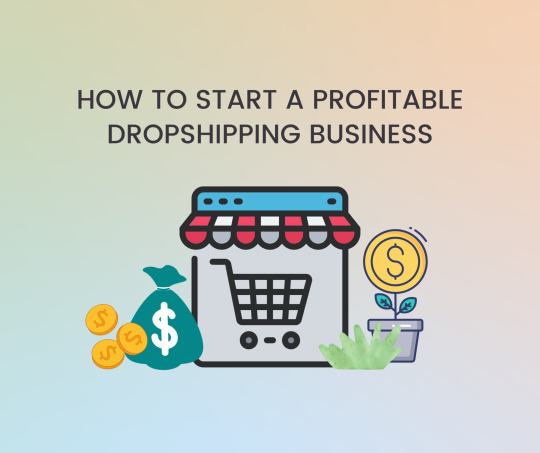
What is Dropshipping?
Before diving into how to dropship on Shopify, let’s quickly go over what dropshipping is. Dropshipping is a retail fulfillment method where the store doesn’t keep the products it sells in stock. Instead, when a store sells a product, it purchases the item from a third party and has it shipped directly to the customer. This means the seller doesn’t have to handle the product directly.
How to Dropship on Shopify

Set Up Your Shopify Store If you haven’t already, sign up for a Shopify account and choose a subscription plan that suits your needs. Once you’re set-up, customize your store’s design and settings to reflect your brand.
Choose Your Niche and Products Research and select a niche for your dropshipping store Consider factors such as market demand, competition, and profit margins. Use Shopify’s product research tools or third-party apps to find trending products within your chosen niche.
Find Reliable Suppliers Identify reputable suppliers or wholesalers who offer dropshipping services for the products you want to sell. Platforms like Desers , Spocket, and AliExpress are popular choices for finding dropshipping suppliers.
Import Products to Your Store Use Shopify apps like Oberlo or the built-in product import feature to add products from your chosen suppliers to your store. Customize product titles, descriptions, and images to make them unique and appealing to your target audience.
Set Your Prices and Profit Margins Determine your pricing strategy based on factors like product cost, shipping fees, and desired profit margins. Be mindful of staying competitive while ensuring your prices cover expenses and generate profit.
Optimize Your Store for Conversions Optimize your Shopify store for conversions by creating compelling product descriptions, high-quality images, and a user-friendly checkout process. Consider adding trust badges, customer reviews, and clear shipping information to instill confidence in potential buyers.
Market Your Store Implement a marketing strategy to drive traffic to your Shopify store and generate sales. Utilize social media marketing, content marketing, email campaigns, and paid advertising to reach your target audience and increase visibility.
Manage Orders and Customer Service Monitor your orders closely and fulfill them promptly through your dropshipping suppliers. Provide excellent customer service by promptly addressing inquiries, resolving issues, and ensuring a smooth shopping experience for your customers.
Starting a dropshipping business on Shopify offers a low-risk, low-cost way to enter the world of e-commerce If you need any Shopify Dropshipping Expert Contact Us
0 notes
Text
10 Great Places to Find Shopify Experts for Your Shopify Projects
We’ve curated a comprehensive list of the top 10 marketplaces where you can find skilled Shopify professionals to bring your e-commerce dreams to life. Whether you’re seeking web designers, developers, or marketing wizards, these platforms are your gateway to assembling the perfect team for your Shopify project.
1. Shopify Experts Marketplace

As the official platform endorsed by Shopify itself, the Shopify Experts Marketplace is the go-to hub for finding certified professionals who specialize in everything from store setup to design customization and app development. With a rigorous vetting process, you can trust that you’ll be working with top-tier talent.
2. Upwork

Upwork is a treasure trove of freelancers offering their expertise in various fields, including Shopify development. You can browse through profiles, review portfolios, and even conduct interviews to ensure you find the perfect match for your project requirements.
3. Freelancer
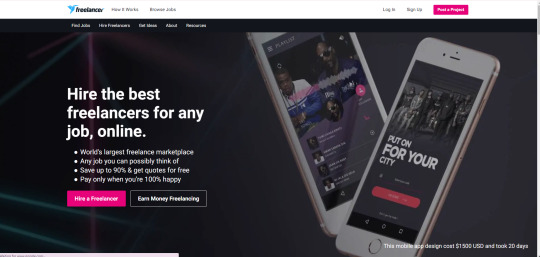
Similar to Upwork, Freelancer is another popular platform where you can post your Shopify project and receive bids from freelancers worldwide. With its extensive pool of talent, you’re bound to find Shopify experts who fit your budget and project scope
4. Toptal

If you’re looking for elite Shopify developers, Toptal is the place to be. This platform meticulously screens its freelancers to ensure they meet the highest standards of skill and professionalism, guaranteeing top-notch results for your Shopify project.
5. Fiverr
Fiverr offers a diverse range of Shopify experts who can assist you with tasks ranging from theme customization to store optimization. With its user-friendly interface and budget-friendly services, you can easily find the right freelancer to fulfill your project needs.
6. Codeable
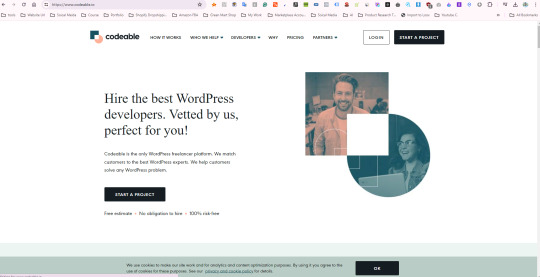
Codeable specializes in connecting businesses with top WordPress and Shopify experts. Their handpicked developers undergo rigorous testing to ensure they possess the expertise required to deliver exceptional results for your Shopify project.
7. PeoplePerHour
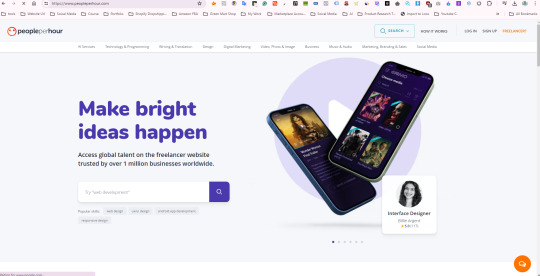
PeoplePerHour boasts a community of skilled Shopify experts ready to tackle your e-commerce challenges. From setting up your store to implementing custom features, you can find freelancers with the expertise to bring your vision to life within your budget and timeline.
8. Guru

Guru offers a platform where you can find Shopify experts proficient in various aspects of e-commerce development and optimization. With its transparent hiring process and flexible payment options, you can collaborate with shopify experts who understand your business goals.
9. 99designs
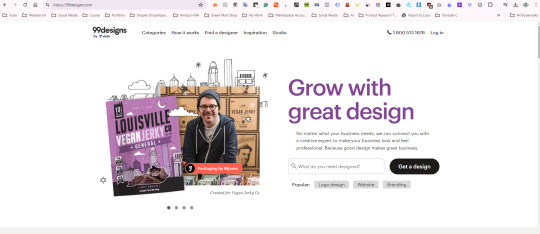
If you’re looking for talented designers to give your Shopify store a visually stunning makeover, 99designs is the place to be. You can launch a design contest or work directly with handpicked designers to create a unique and captivating storefront for your brand.
10. LinkedIn
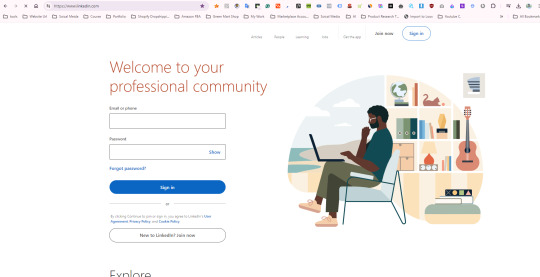
Don’t overlook the power of LinkedIn when searching for Shopify experts. Utilize its advanced search filters to find professionals with expertise in Shopify development, design, marketing, and more. Building a network of skilled individuals can lead to long-term collaborations and business growth.
10 marketplaces, you can tap into a vast pool of Shopify experts who possess the skills and experience needed to take your online store to new heights. If you need any Expert contact us
0 notes
Text
Top 10 Dropshipping Supplier Apps for Shopify in 2024
Dropshipping Suppliers For Shopify
Ready to level up your Shopify dropshipping game? Look no further! In this ultimate guide, we unveil the top 10 dropshipping supplier apps tailor-made for Shopify. Whether you’re a seasoned pro or just starting out, these apps will revolutionize your e-commerce journey. Let’s explore how these powerful tools can transform your Shopify store and supercharge your sales.
1. Dsers

dropshipping suppliers for shopify
DSers simplifies your order processing with its user-friendly interface and automated features. Seamlessly connect with suppliers and streamline your Shopify store’s operations for enhanced efficiency
2. AutoDS

AutoDS empowers Shopify dropshippers with its comprehensive platform for product sourcing, order management, and automated processes. Stay ahead of the competition and maximize your Shopify store’s potential with AutoDS
3. CJdropshipping:

Source high-quality products directly from manufacturers with CJdropshipping. With advanced order management and speedy shipping options, delight your Shopify customers with prompt delivery and exceptional service.
4. Sell The Trend

Stay ahead of trends and uncover winning products with Sell The Trend’s powerful product research tools. From niche ideas to hot-selling items, Sell The Trend empowers Shopify dropshippers to make data-driven decisions and drive sales.
5. Dropship - Discover Winning Products To Sell

Harness the power of data with Dropship - Discover Winning Products To Sell’s advanced analytics and automation tools. Gain valuable insights into market trends and streamline your dropshipping operations for enhanced efficiency and profitability on Shopify.
6. Spocket

Spocket opens the door to premium products sourced from US and EU suppliers. With its extensive catalog and rapid shipping, you can offer your customers high-quality goods while slashing delivery times and costs.
7. Printful

Dazzle your customers with custom merchandise using Printful’s print-on-demand services. From apparel to accessories, bring your designs to life and automate the entire fulfillment process with seamless Shopify integration.
8. Syncee

Connect with suppliers worldwide and manage your product catalog effortlessly using Syncee. With features like bulk uploads and automatic inventory syncing, efficiency and profitability are within reach for your Shopify store.
9. HyperSKU
Optimize your Shopify dropshipping with HyperSKU’s efficient sourcing and fulfillment solutions, ensuring seamless operations and exceptional customer service.
10. Importify

Simplify product imports from various platforms into your Shopify store with Importify’s user-friendly interface and extensive supplier network, enabling hassle-free dropshipping operations.
With the right dropshipping supplier apps for Shopify, you have the tools to transform your e-commerce business and achieve unprecedented success If You Need Any Shopify Expert Contact Us
0 notes
Text
10 Simple Shopify Tips for Better Online Sales
Shopify store’s performance without getting bogged down in technical jargon? Whether you’re new to e-commerce or looking to spruce up your online shop, these 10 easy-to-follow Shopify tips will help you make the most of Shopify and attract more customers.
shopify tips

1. Pick a Great Look
Start strong by choosing a Shopify theme that looks good and is easy to use. Find one that fits your brand and works well on phones and computers alike
2. Make Your Products Shine
Show off your products with clear pictures and descriptions. Use words that people might search for when looking for what you sell.
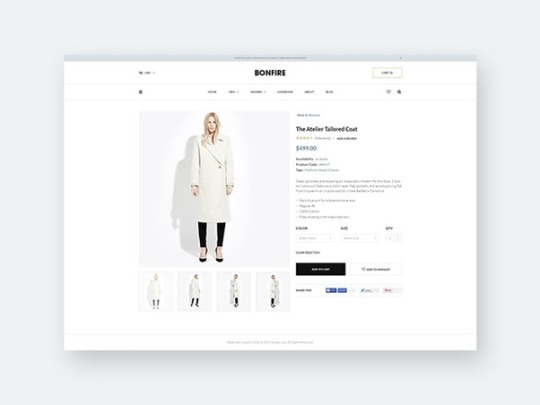
3. Keep Checkout Simple
Don’t scare off buyers with a long, complicated checkout process. Make it easy for them to pay quickly, even if they’re just visiting your store for the first time.

4. Add Extra Features with Apps
Shopify has lots of apps you can add to your store to make it do more things. From sending emails to managing your stock, there’s an app for almost everything.

5. Get Found on Google
Make sure people can find your store when they search online. Use words on your website that match what people are looking for. That way, Google will know to show your store to them.

Search Engine Optimization, Search Engine Optimization High speed internet search engine information, business people use smartphones to search for information in global network replication areas.
6. Offer Free Shipping
Everyone loves free shipping! Try giving it to people who spend a certain amount in your store. It might make them buy more from you.

7. Talk to Your Customers
Send emails to people who buy from you, or sign up to your mailing list. Tell them about new things you’re selling or give them special discounts.

8. Help Your Customers
Be nice to people who visit your store. Answer their questions quickly and try to help them find what they’re looking for.

9. Look at Your Numbers
Keep an eye on how many people visit your store and how much they buy. That way, you’ll know what’s working and what you need to fix.

10. Keep Learning
E-commerce changes all the time. Keep reading blogs and talking to other people who sell things online. You might learn something new that helps your store do even better!

following these 10 simple Shopify tips, you’ll be on your way to running a successful online store that attracts more customers and makes more sales. Happy selling! if you need any Shopify Expert Contact us
1 note
·
View note